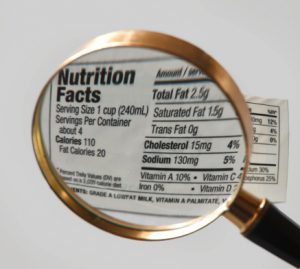AdviceParenting Advice
Making Sense of Food Labels
A large supermarket has over 20,000 stock items on their shelves. With such variety available it’s important you know how to read food labels if you are to make the best healthy choices. By law all packaged and manufactured food must have a food label that describes the ingredients, as well as certain nutritional values. Here is what the label information means.
‘Use by and best before’ food label
Any food that has a shelf life of less than two years must have a ‘use by’ or ‘best before’ date on them. ‘Best before’ date means food should remain of good quality until that date. Foods may still be able to be eaten after this date, but the nutritional value will have lessened. The ‘use by’ label is for foods that should be consumed before that day, like perishables (meat, dairy products, etc.) Foods with a ‘use by’ label cannot be sold after that date.
‘Ingredients’ food label
Ingredients must be listed in descending order by weight, including added water. The ingredient listed first is present in the largest quantity and the last ingredient is the least quantity. If an ingredient makes up less than 5% of the food it doesn’t have to be listed.
Food additives
Food additives are included in the ingredients list. Additives are described according to their class followed by a number or chemical name. Google search ‘food additives’ to find out what the numbers or chemicals represent – it’s important as many of them are really bad for you like many flavour enhancers.
Example
Flavour enhancers (621, 627, 631)
Mineral salt (339)
Spice (white pepper)
Colours (150D, 110)
Nutritional information panel (NIP)
The nutrition panel is not an ingredient food label. Instead this panel, required by governments, details the quantity of seven essential nutrients the food contains per serve, as well as per 100 grams or 100 ml. Serve sizes vary between manufacturers, so the 100 g or 100 ml is more helpful when it comes to food comparisons. The seven nutrients are: energy (kilojoules), protein, total fat, saturated fat, total carbohydrates, sugars and sodium (salt). Cholesterol doesn’t have to be included unless there is a claim about it. Other nutrients can be listed if there is a claim about them. For example, if the Weet-bix label says it has iron for physical and mental performance, the iron quantities are usually included on the panel.
Energy: This refers to the amount of fuel the food provides. If your work is physically demanding a food with high energy is good, but if you do a sedentary job, high energy foods might contribute to being overweight.
Fat – total: High fat foods tend to be high in energy (fattening). Healthy foods have a lower fat content.
Example: 20g of fat per 100g is a large amount of fat; 3g of fat per 100g is small amount of fat.
Fat – saturated: High quantities of saturated fats can cause bad cholesterol levels to increase, causing a greater risk of heart disease. Healthy foods have low amounts of saturated fat.
Carbohydrate – total: Our bodies love carbohydrate foods and they are an excellent source of energy. Our digestive system breaks them down to form glucose in the blood. Carbohydrates aren’t all equal though. The Glycaemic Index (GI) describes how some foods break down slowly thus causing the blood’s glucose levels to raise more slowly. Other carbohydrates have a high GI causing the glucose levels in the blood to rise more quickly.
Carbohydrates – sugars: The nutritional panel includes both naturally occurring sugars in fruits, corn, etc and added refined sugars. Less sugar is the better healthy choice. Be aware the following ingredients are sugars too: corn syrup, dextrose, fructose, glucose, golden syrup, honey, lactose, malt, maltose, molasses, sorbitol, sucrose, xylitol.
Example: 30g of sugar per 100g is a large amount of sugar; 2g of sugar per 100g is a small amount.
Sodium: This is the salt content. Low salt is best (less than 400mg of sodium per 100g)
Other food label information to note:
No added salt or reduced salt: means no salt has been added or the manufacturer has reduced the normal quantity they usually use in the product.
High fibre: means the food contains at least 3g of fibre per average serve. Very high fibre contains at least 6g per serve.
Oven baked, not fried: Being oven baked doesn’t guarantee a healthier product. Some manufacturers spray the product with oil before baking, so it may contain as much fat as the fried product (this is usually so if the product is brown and crunchy). The fat content on the label will show how healthy it is.
No added sugar: This means no refined sugar has been added to the product like sucrose. Some fruit juices have large quantities of sugar, even though it’s natural. Also, although fructose, malt extract and corn syrup are natural sugars they may contain the same amount of energy as sucrose. The energy data will help you choose the healthy option.
97% fat free: The 97% sounds okay but you really have to think backwards to get the right picture – the food contains 3% fat! And to confuse matters, marshmallows are fat-free – no fat at all – but they contain 68% sugar. Which just proves how helpful nutritional labels are.
Follow and like us on Facebook to stay up to date with the best of parent research.




